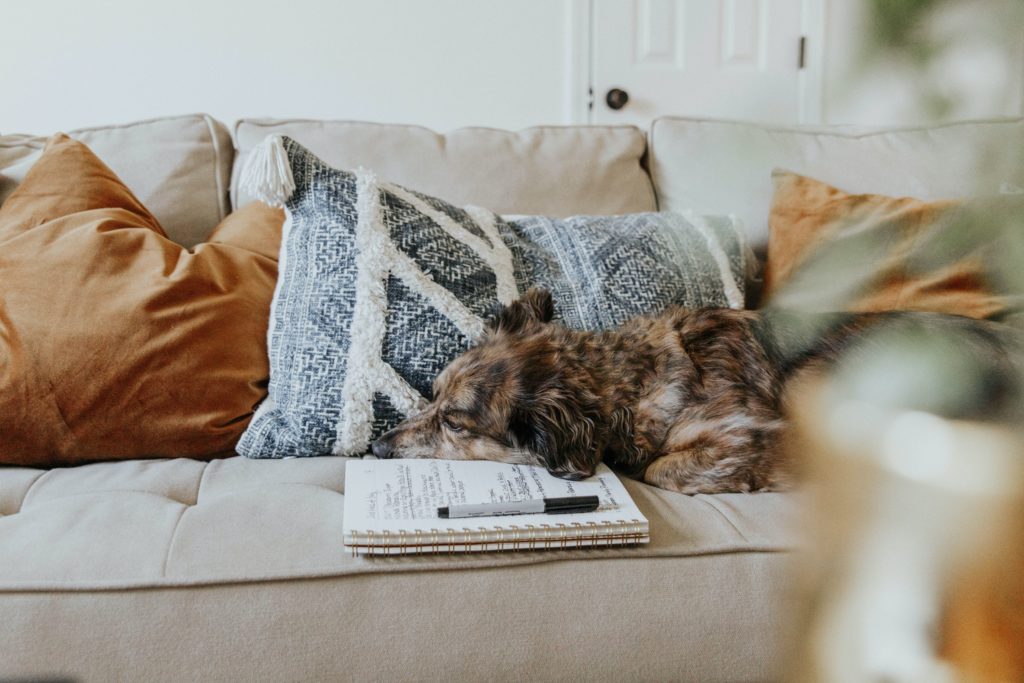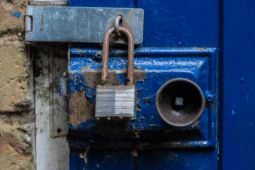How To Clean a Suede Couch
Right alongside the bed, a couch is one of the most frequently used pieces of furniture in just about any home. Depending on the setting, it can be a place to consume snacks, a playground, or even a bed from time to time.
More importantly, a couch is generally the site of more than a few stains and spills. With material like suede, which is more supple and soft, it can be difficult to clean this expensive material. Cleaning a suede couch doesn’t have to be daunting. After determining what type of suede you are dealing with, it comes down to two important steps. Brush and vacuum the loose soil and treat the stains carefully. Heavier stains may require professional intervention.
Do You Have a Natural or Microfiber Suede Couch?
Before you can begin the cleaning process, it is important to note that not all suede is the same. Determining whether you have a natural animal hide or microfiber suede couch is important because the cleaning methods are different.

Natural suede is made of animal leather that has a fuzzy or napped finish to it. Natural suede tends to be quite thin, with either undyed or porous dyed leather. You can even see the different variations within the hide grain itself.
Microfiber suede, meanwhile, is created from nylon and polyester fibers. Those fibers are then woven and cut to imitate the plush, soft feel that natural suede has. The fibers are woven tightly, which means that it is more resistant to dirt, dust, and even stains than a natural suede would be.
Look for the Tag
Still not sure whether you have a natural or microfiber suede couch? There is a slightly easier method for determining the type of suede that your couch is made of. You should find the care tag attached to the couch. In the United States, these tags are required for all furniture.
Code W. A code W tag means that the fabric is able to be cleaned by using a water-based cleaning solvent.
Code S. When you see a code S, it means that the fabric needs to be cleaned through a water-free or dry cleaning solvent in order to remove soils and stains. If you use this type of cleaner, do so away from open flames like candles or fireplaces and ensure that the room is properly ventilated.
Code W-S. This is a more versatile fabric. It can be cleaned using solvent-based or water-based products.
Code X. Despite sounding like something out of a science-fiction movie, this tag means that you should avoid using a cleaning agent. To clean code X fabrics, it should only be done with a vacuum or by a professional. Using a cleaning product can not only stain the fabric but shrink it as well.
How to Clean a Natural Suede Couch
As you can see, cleaning a suede couch may or may not be an easy endeavor. It all comes down to your specific type of suede. Do not skip checking the tag as using the wrong method could damage and even ruin your suede.
After identifying the type of suede that you are dealing with, it comes down to a few simple steps to get your couch clean depending on what the material in question is.

Step 1: The Tools for the Job
No matter what, the first step in the process should be to check the tag on your couch. Never start cleaning without knowing what the material is. Even using a water-based cleaner could wind up doing irreparable damage to your couch. Here are the tools and materials you’ll need:
- Microfiber cloth
- Sponge
- Soft-nylon scrub brush
- Vacuum with upholstery attachments
- Suede brush
- Bucket
- Spray bottle
To clean a natural suede couch, you should also have a glue remover (like Goo Gone), cornstarch or baby powder, a dishwashing liquid, and rubbing alcohol. Some of these will change depending on the material in question.
Step 2: Vacuum Up the Loose Soil
Because of its sensitive nature, even loose soil and dust can damage the surface of suede. Start by gently vacuuming up the soil and dust that may be residing on your couch. It is a good idea to vacuum your couch weekly to avoid a buildup of dust and dirt on the surface of the couch.
If you skip right to scrubbing or treating the stains, you run the risk of scratching the suede. When there are scratches in your suede, there is not much that can be done to remedy the issue. Take the time to vacuum your couch even if there is no visible soil or dust.
Step 3: Stain Treating
In the event of a stain or spill, it is imperative to treat the issue right away. The longer the stains are allowed to sit, the more difficult they will be to remove. Depending on what the stain is, one method will be better than the others.
For oil, cornstarch is an excellent choice. If the stains are sticky or have a residue to them, use a commercial glue remover like Goo Gone. Wet or damp spills should be carefully blotted and given the proper time to dry.
Step 4: Suede Brushing
It is important that for this step, you have a suede brush. These types of brushes are specifically crafted to work with fickle and sensitive material. After the stain has been treated and dried properly, the suede brush is used to help bring the finish back to the surface of the suede.
Do not use any brush, particularly those with rougher bristles, to scrub the suede. Using a brush with coarser bristles can scratch and damage the suede. When that happens, there is no going back.
How to Clean a Microfiber Suede Couch
Because there are manufacturing differences between natural suede and microfiber suede, there are cleaning differences as well. Some microfiber couches are able to be cleaned using water-based cleaners. That said, some may still require a solvent-based cleaner.
Remember to check the tag of your couch before moving forward. Certain types of suede can be damaged by using water. No matter what type of suede couch you have, vacuuming weekly is imperative. Keeping the couch free of excess dust and dirt goes a long way in the cleaning process.

Step 1: Vacuum
If you don’t already have one, invest in a vacuum cleaner that has upholstery attachments. These attachments will oftentimes include a small brush attachment that is made for cleaning furniture specifically.
Make sure to get in all the gaps and crevices on a regular basis. The less loose soil, dust, or dirt there is to contend with, the easier it will be to clean the suede when the time comes.
Step 2: Creating a Solution
When your couch has been properly vacuumed, it is time to create an effective cleaning solution. Star by adding four cups of warm water into a large bowl or a bucket. Add in about a quarter cup of dishwashing liquid.
You can either use a handheld mixer or a simple whisk to mix the two together. The result should be a soapy mixture with lots of suds. In a second bowl or bucket, fill with plain water.
Step 3: Scrubbing
Using a nylon scrub brush with soft bristles, dip it in the suds and pick a place to start. The back or top of a cushion is fine; so are the arms. You want to avoid dripping any of your dirty suds onto areas of the couch that have already been cleaned.
Make sure to spread your soapy mixture evenly over the area(s) you intend to clean, scrubbing gently but firmly. Rinse the brush in your clean water frequently, making sure that it is as dry as it can be when you go back to the soap suds. Make sure to focus on a small area at any given time to avoid dripping.
Step 4: Rinse and Finish
When you have completely cleaned the area, it is time to wipe away those suds. Use a damp microfiber cleaning cloth and a little bit of plain water to completely remove the suds. Move from area to area, repeating the process to get rid of those suds.

Allow the suede to dry naturally. Depending on the amount of work done, it could take some time. When the suede has totally dried, go back over the areas using your upholstery brush in order to properly fluff those fibers back up.
Using Isopropyl (Rubbing) Alcohol
Microfiber couches are also able to be cleaned through the use of isopropyl alcohol. Though this method is not quite as common as the one above, it is just as effective. All you need is the alcohol, a spray bottle, and a small bucket of cool water.
After vacuuming, spritz the area with alcohol. While the fabric is still damp – which won’t be long because the alcohol evaporates quickly – scrub the area using a sponge. Like the brush in the aforementioned process, rinse the sponge out frequently. You do not want to oversaturate the area if you can help it.
Finally, give the couch time to air dry and then follow up with your vacuum’s upholstery brush to fluff up those matted fibers.









